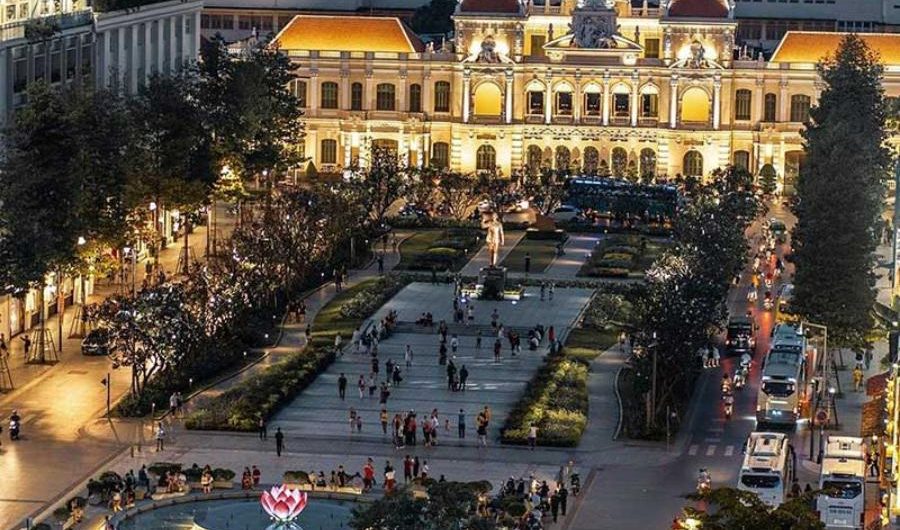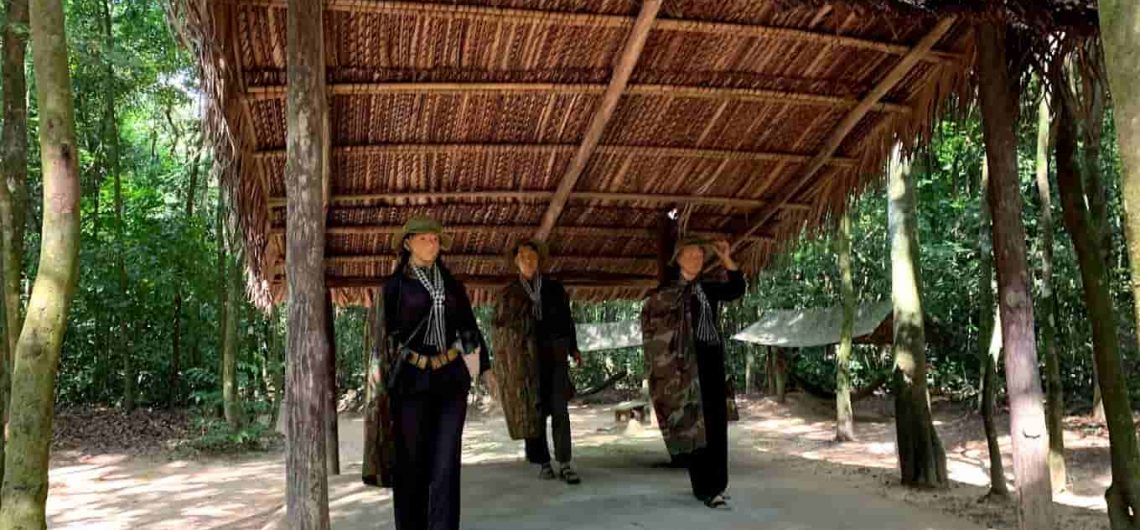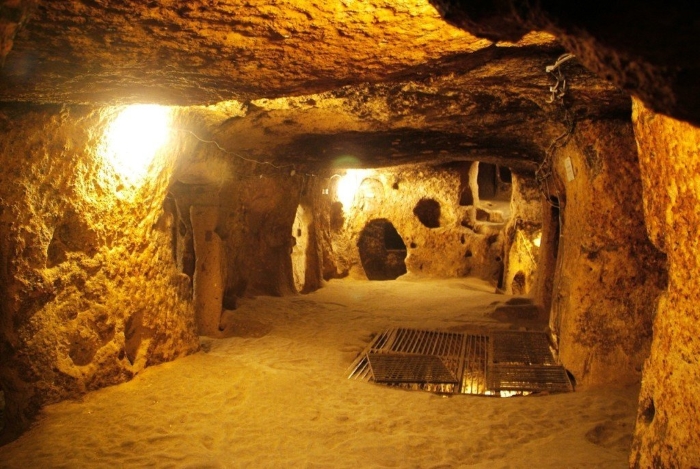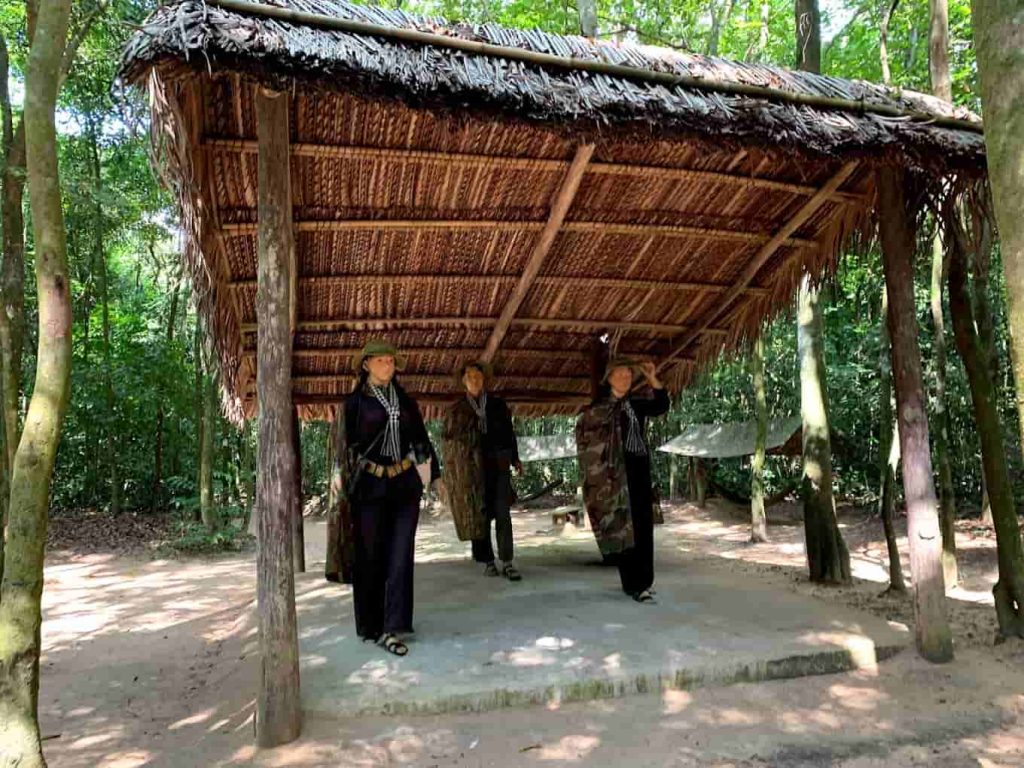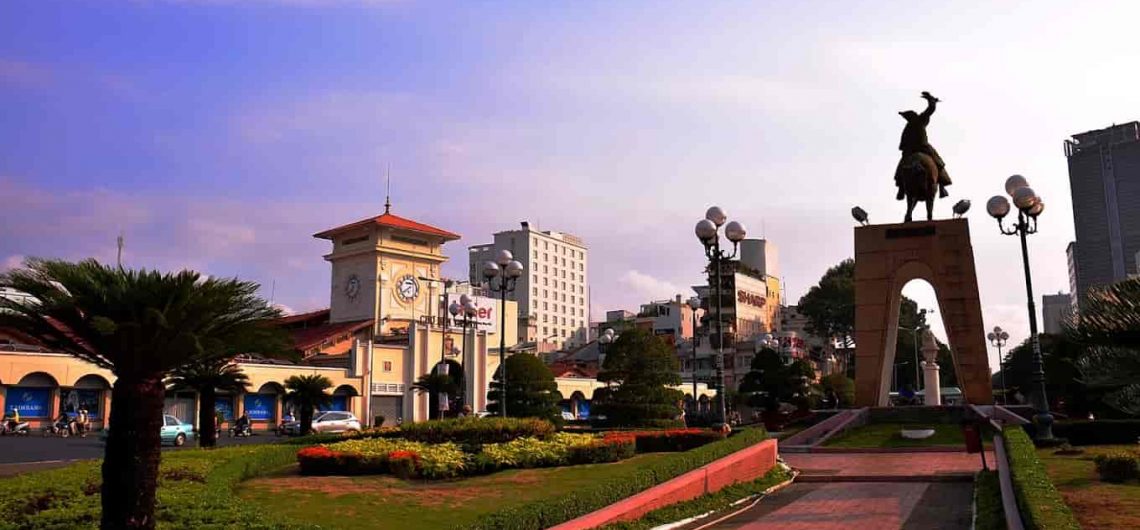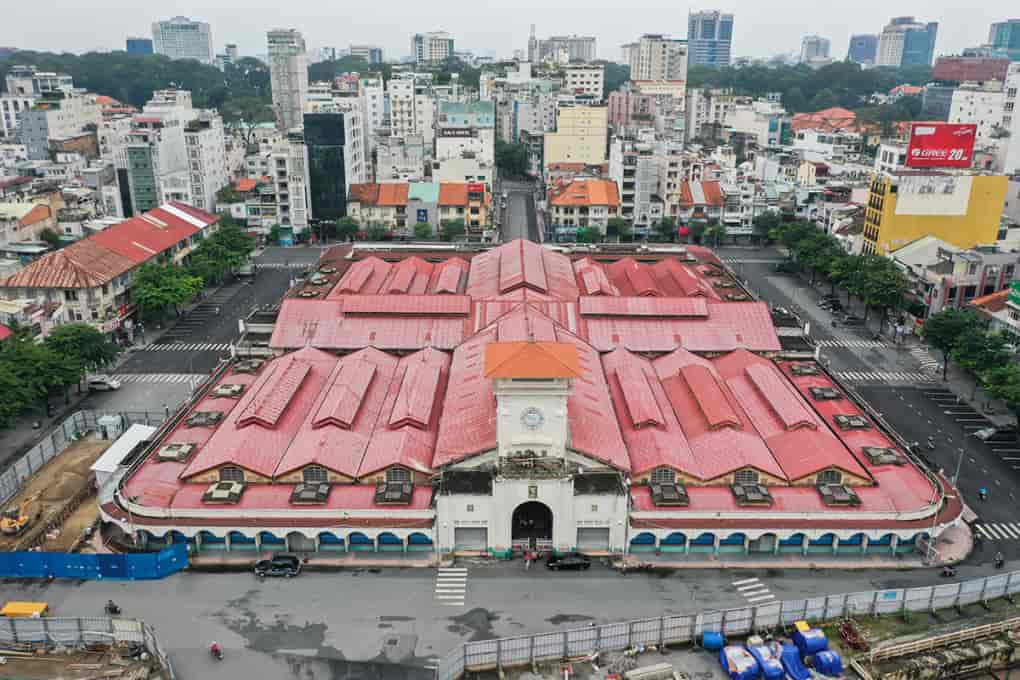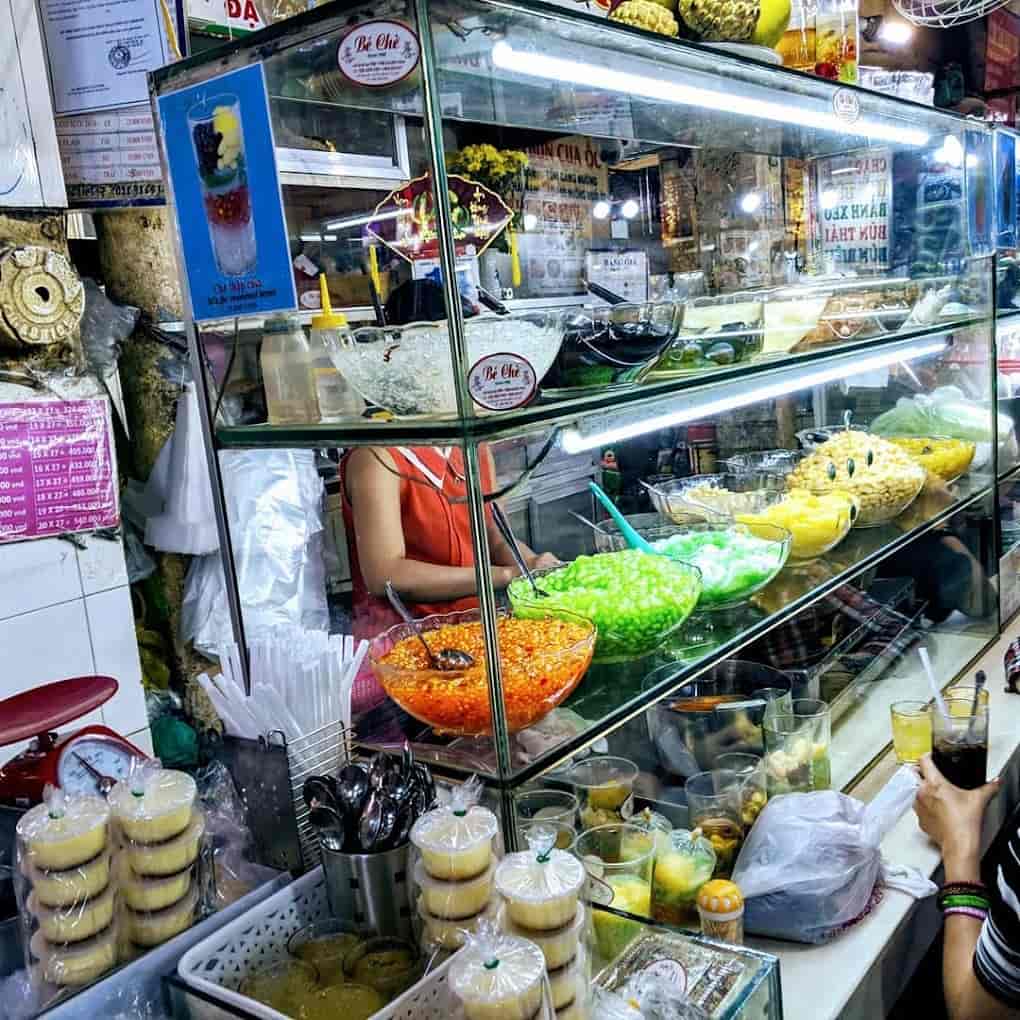With beautiful scenery, diverse entertainment activities, and numerous services, bustling shops on both sides of the street,… Nguyen Hue Pedestrian Street in Saigon (Ho Chi Minh City) – a street likened to a paradise of activities, is the heart of the glamorous city and has become an ideal meeting place for both locals and tourists. Besides strolling and sightseeing, there are plenty of interesting things that you will surely easily discover. Let’s explore every nook and cranny and experience the vibrant charm of this beautiful street!
Some details about Nguyen Hue Pedestrian Street in Saigon.
Where is Nguyen Hue Pedestrian Street located?
Currently, this popular street, which attracts many tourists, is situated on Nguyen Hue Boulevard in District 1, Ho Chi Minh City. It connects the People’s Committee Headquarters with the Saigon River and the Bach Dang Wharf. Since its inauguration until now, Nguyen Hue Pedestrian Street has been embraced as the liveliest destination in Saigon, offering an open space, various exciting activities, sparkling apartment buildings with lights, and stylish cafes.
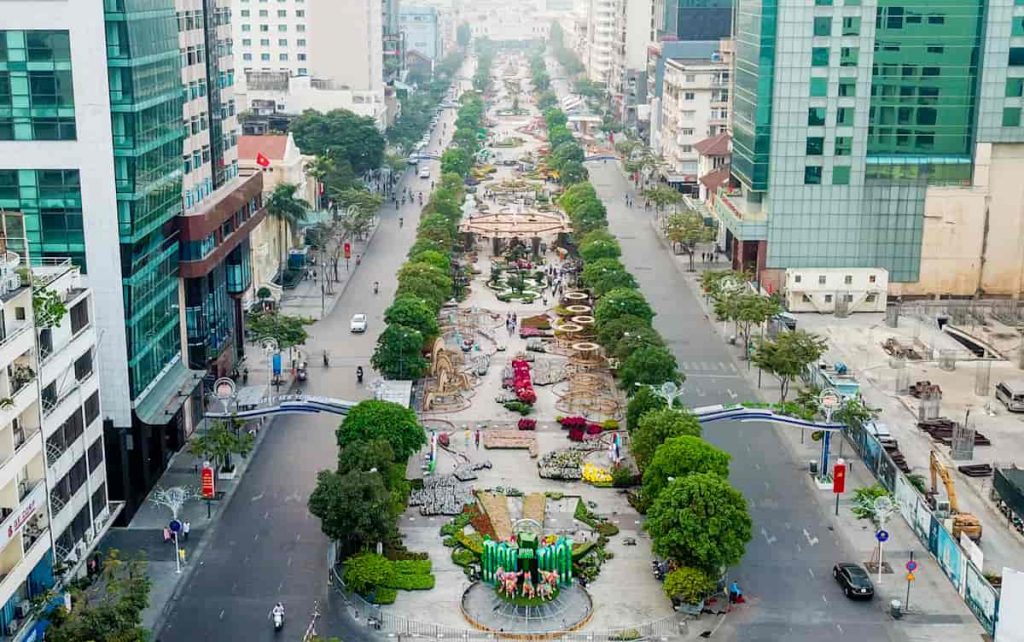
Why does this pedestrian street exist in Saigon?
In 1790, it was originally a canal that brought water from the Saigon River into Gia Dinh city. It was also known as “Kinh Cho Vai” (Silk Market) because it used to be a vibrant trading area for Indian fabrics. Later, Rear Admiral Cherner renamed it to “Cherner Canal.” However, due to heavy pollution caused by the increasing workload, the French colonizers decided to fill the canal and named it “Cherner Avenue.” In 1959, during the Republic of Vietnam period, it was given another name, “Nguyen Hue Boulevard,” which is still used today.

In reality, Nguyen Hue Pedestrian Street was constructed to celebrate the 40th anniversary of the liberation of the South, the reunification of the country, with a total budget of 430 billion Vietnamese dong. After 7 months of construction, the project was completed and inaugurated on April 30, 2015. The street has a total length of 670 meters and a width of 64 meters, consisting of two main sections: from the President Ho Chi Minh Monument Park (Le Thanh Ton Street) to Le Loi Street, and from Le Loi Street to Ton Duc Thang Street. The entire street is paved with granite tiles, lined with trees on both sides, and features an underwater music control center, modern lighting, and restrooms, making it the most beautiful and modern square.
Is Nguyen Hue Pedestrian Street open every day?
This is probably a question that everyone wonders when planning to visit this street. Based on the travel experience in Ho Chi Minh City, Nguyen Hue Pedestrian Street operates on most days, from Monday to Sunday. However, if you want to immerse yourself in the vibrant atmosphere, it’s best to choose the weekends. Usually, festivals and important events are organized on these days to cater to the entertainment needs of tourists.
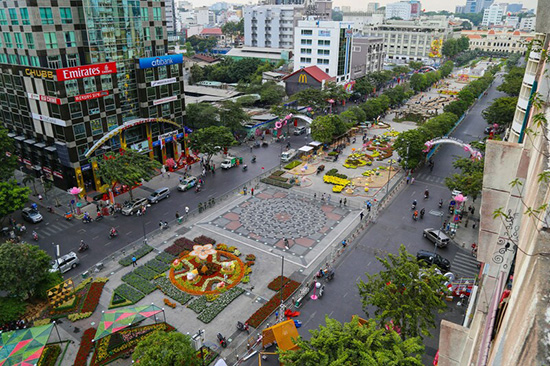
Experience the extremely fast and convenient private transfer service from Tan Son Nhat Airport (SGN) to Ho Chi Minh City by private car.
Nguyen Hue Pedestrian Street in Saigon – What fun experiences to try!
When you come to Nguyen Hue Pedestrian Street in Saigon, you will never feel bored because it is a paradise of activities, offering various experiences such as:
Relax in the refreshing space of Nguyen Hue Pedestrian Street
With its spacious square and green trees on both sides, the atmosphere here is always refreshing and cool. Whenever you feel tired, whether it’s morning, noon, afternoon, or evening, find a spot to sit, enjoy the breeze, watch people passing by, chat with friends, and relax without spending a dime. You can also play with the white water columns, feed the pigeons – simple activities that can make your worries disappear in no time.
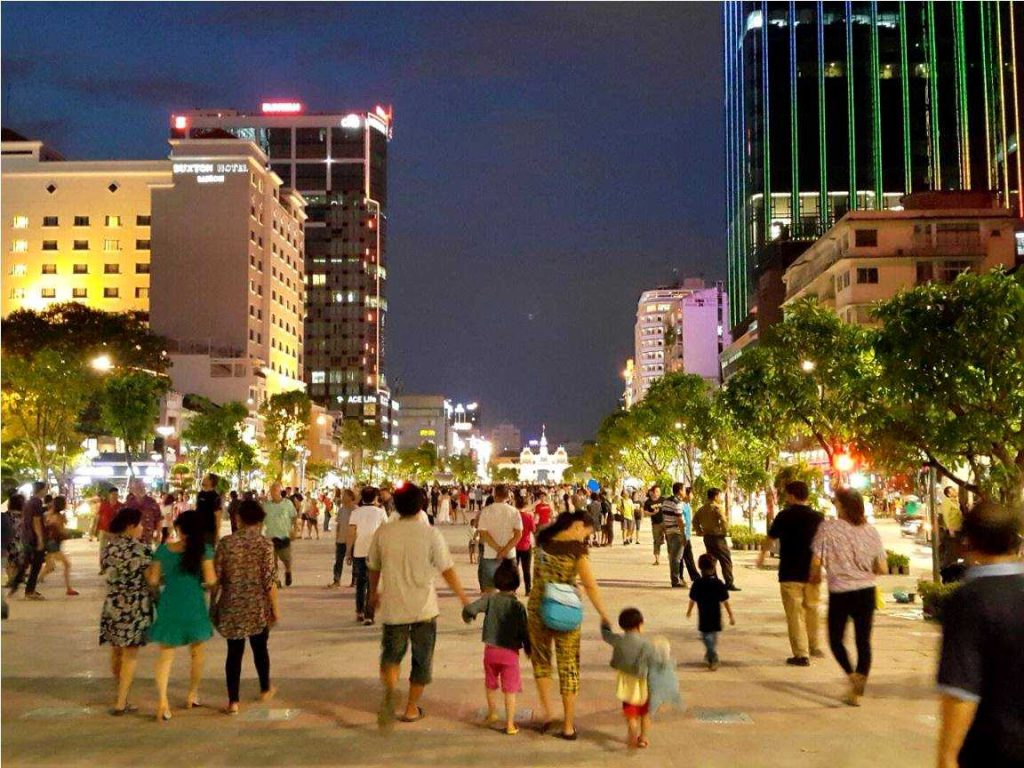
Watch music performances on Nguyen Hue Pedestrian Street
During Saturdays and Sundays, wandering around Nguyen Hue Pedestrian Street, you’ll encounter young people with a shared passion for the arts gathering here to exchange and perform. From modern hip-hop music to gentle guitar tunes and youthful songs, you can enjoy all of these live on the street.

Moreover, if you visit during special events, you might have the chance to witness large music shows with grand stages, dynamic sound, and vibrant lights. What’s even better is that many famous singers perform for free. So, be prepared to immerse yourself in the lively atmosphere and have a blast!
Admire the beauty of Nguyen Hue Pedestrian Street from above.
Surrounding Nguyen Hue Pedestrian Street in District 1 are countless cafes. They serve not only drinks but also provide vantage points for tourists to admire the lively street from above. Enjoying the picturesque view from such a height is a delightful experience that everyone would love to have. Therefore, make sure to find a café with a balcony, order a drink, and indulge in the bustling city view.
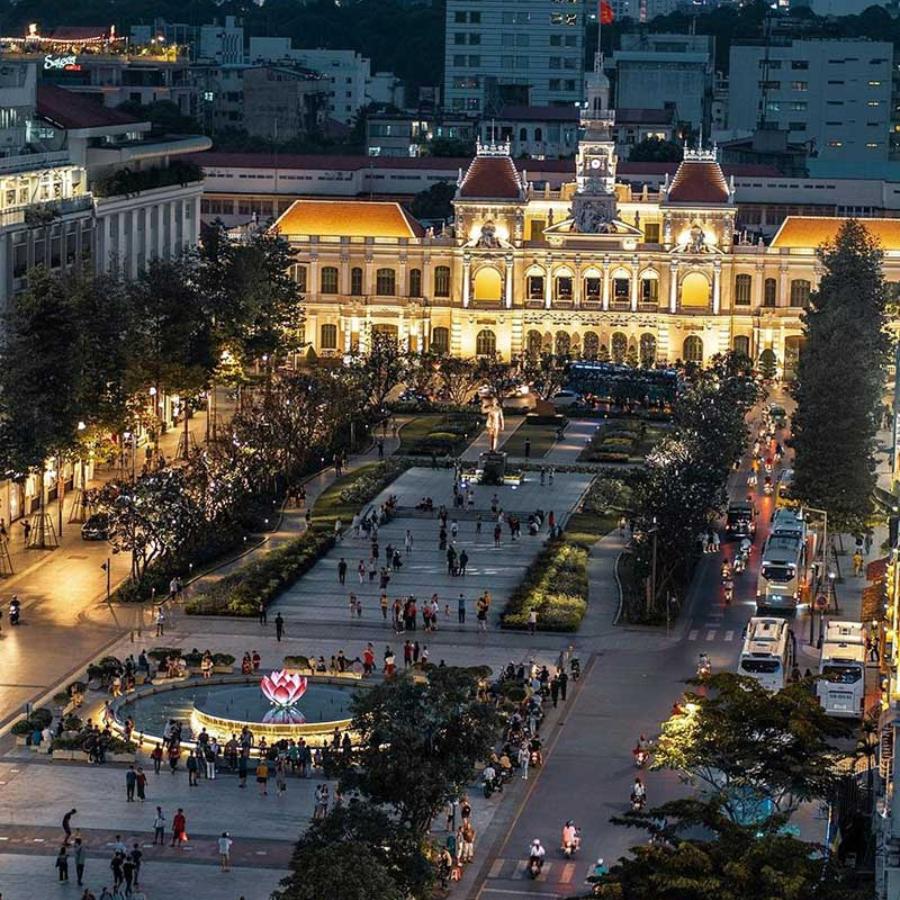
Stroll around Nguyen Hue Pedestrian Street and capture beautiful photos
Nowadays, many people compare Nguyen Hue Pedestrian Street in Saigon to foreign streets. It’s clean without scattered trash, and the cables are well organized. The long street is entirely paved with clean and shiny granite tiles, adorned with modern fountains, green trees, and flowers. There are also colorful cafes and tea shops with bright lights. Just take a stroll and find some corners, and you’ll have plenty of beautiful and sparkling photos.

Discover the beauty of Nguyen Hue Pedestrian Street after 11 PM
In the evening, the pedestrian street is always vibrant and bustling. But have you ever thought about staying here after 11 PM? At this time, the lively scene you usually see will be replaced by a quiet emptiness, with no one around. The vehicles become sparse, and even the street vendors are no longer wandering. It’s ideal if you want to find a peaceful spot in the glamorous city to reflect on yourself or simply contemplate life.
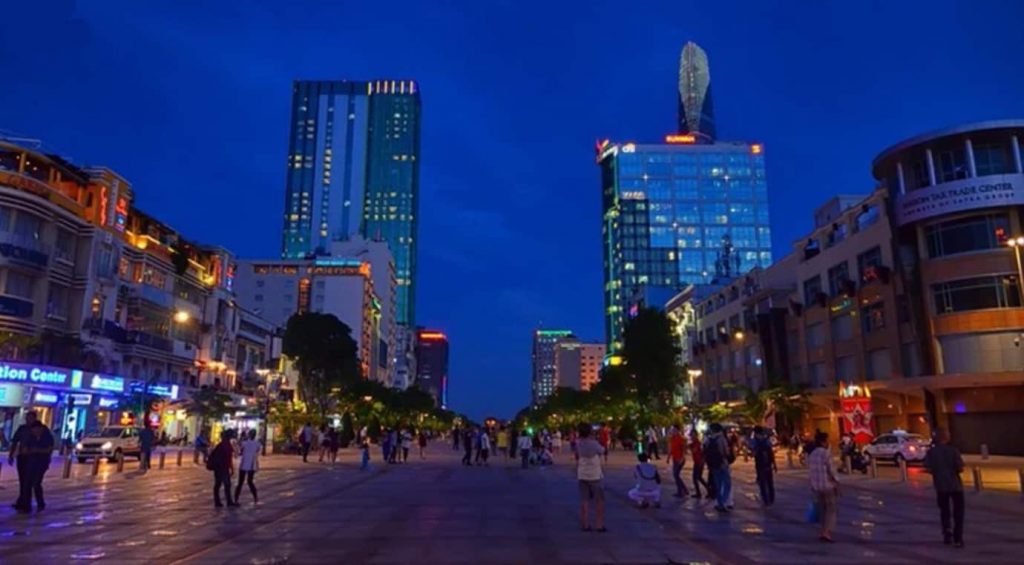
Instagrammable spots near Nguyen Hue Pedestrian Street in Saigon.
Nguyen Hue Pedestrian Street is not the only attraction around; there are several other places to check-in and make your Saigon trip even more exciting.
Nguyen Hue’s Old Apartment Building next to Nguyen Hue Pedestrian Street.
The old apartment building at 42 Nguyen Hue has gained popularity since the pedestrian street appeared. Its worn-out paint and weathered walls have suddenly become trendy, attracting young people to flock here for photo sessions. Amidst this building, you’ll find numerous cafes, upscale restaurants, but exploring the place is necessary to fully appreciate its charm. Besides indulging in some delicious dishes, the highlight here is taking artsy and vintage-inspired photos. If you love photography, these historic backgrounds with a touch of time will surely satisfy your creative cravings.
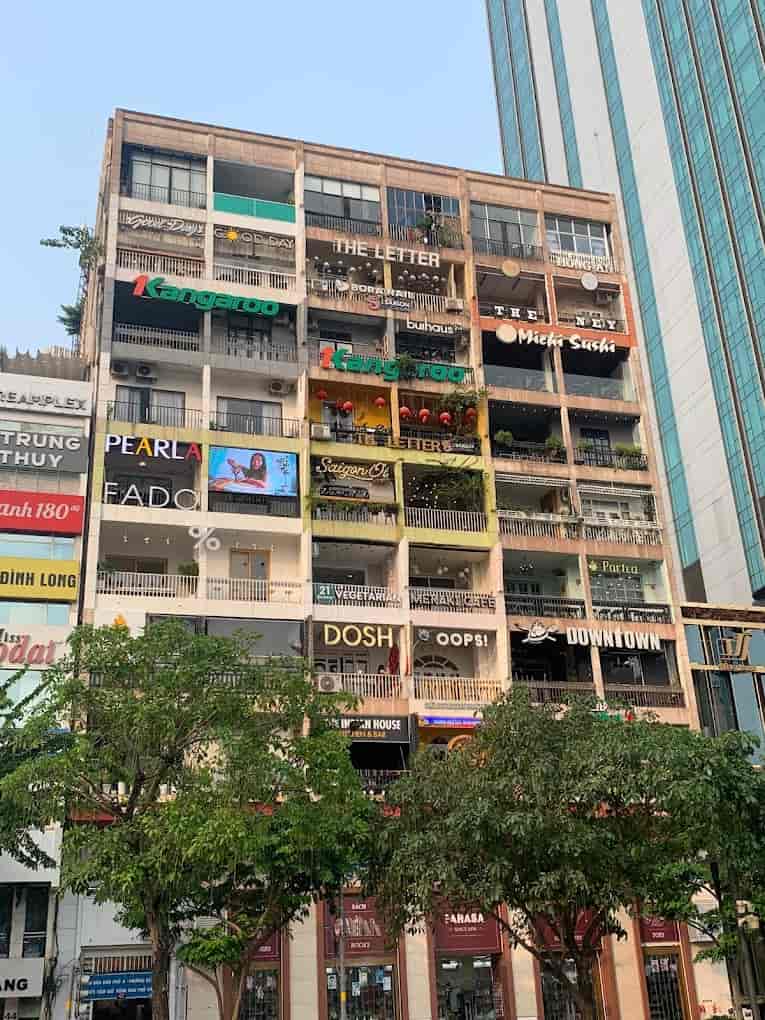
Moreover, take some time to learn about the history of this building and chat with some locals to understand their long-standing way of life. It can be a fascinating experience!
Saigon Garden Complex on the front of Nguyen Hue Pedestrian Street.
Located right next to the pedestrian street is Saigon Garden, a beautiful and luxurious complex in Saigon. With green trees surrounding the entrance, the complex houses restaurants, cafes, modern shopping areas, and various exciting entertainment services, ensuring you’ll never run out of things to do here. It’s also an excellent spot to capture stunning and deep pictures.
Ho Chi Minh Statue at Nguyen Hue Pedestrian Street’s Square.
To the north of Nguyen Hue Pedestrian Street stands the Ho Chi Minh Statue. Inaugurated on May 17, 2015, this monument holds a significant position, welcoming both locals and international visitors to come and admire its magnificence. It serves as a place for people to pay their respects and take in the awe-inspiring sight of the revered leader.
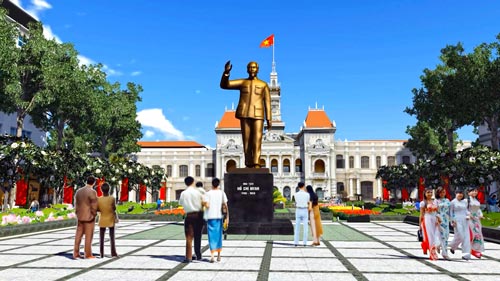
These spots add to the allure of Nguyen Hue Pedestrian Street and provide more opportunities for capturing memorable photos and immersing yourself in the rich history and culture of Saigon.
What to eat at Nguyen Hue Pedestrian Street in Saigon?
Nguyen Hue Pedestrian Street is not only known as a playground but also a food and beverage paradise. Here, you can find a variety of options to satisfy your taste buds. After a stroll, recharge your energy with delicious milk tea from Phuc Long, Boo Coffee, or Slow and Chill Coffee. Try some tasty snacks like mixed rice paper, grilled rice paper, bingsu (Korean shaved ice dessert), cute-shaped ice cream, or refreshing cheap strawberry smoothies with excellent quality.

After exploring Nguyen Hue Pedestrian Street, don’t forget to visit Ben Thanh Market to enjoy local food and do some shopping.
Some tips for exploring Nguyen Hue Pedestrian Street in Saigon.
How to get to Nguyen Hue Pedestrian Street in Saigon?
You can choose to travel by private car, motorbike, or bus to get to Nguyen Hue Pedestrian Street. However, it is recommended to avoid going by car due to heavy traffic, which can easily cause congestion. Instead, consider using a motorbike, as there are several routes (depending on your starting point) that you can check on Google Maps for directions. Once you arrive, you can park your motorbike at nearby parking lots, with a fee of 5,000 VND per vehicle. Additionally, if you visit during the daytime, you can also opt for the bus. Bus routes number 93, 36, 104, 53, 56, 02, 104, 03, 101, and others pass through bus stops near the pedestrian street.
Furthermore, if you plan to visit multiple places in Saigon, relying solely on public transportation might take a lot of time. In that case, DanangPrivateCar.com’s provides private car services with professional drivers in Ho Chi Minh City. With our private car service, we will take you to any place you want to visit, and our experienced drivers will ensure you have a safe and efficient journey.
What to consider when visiting Nguyen Hue Pedestrian Street?
- This place is a gathering spot for both locals and young people from Saigon and tourists, so it can get quite crowded. Be mindful of protecting your personal belongings and be cautious of pickpockets and snatch thieves.
- For first-time visitors to the pedestrian street, you will undoubtedly be enchanted by its atmosphere, so remember to bring a fully charged phone to capture all the places you want to check-in!
After reading this article, are you excited to visit Nguyen Hue Pedestrian Street? Make sure to add this name to your list of places to explore in Saigon if you have the opportunity to visit the city named after President Ho Chi Minh.

